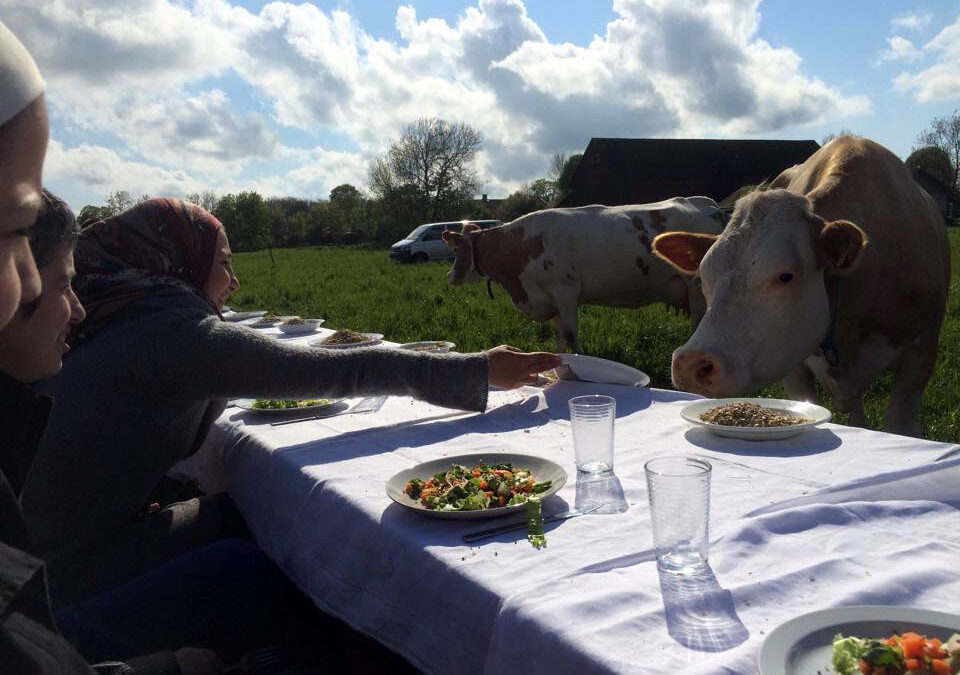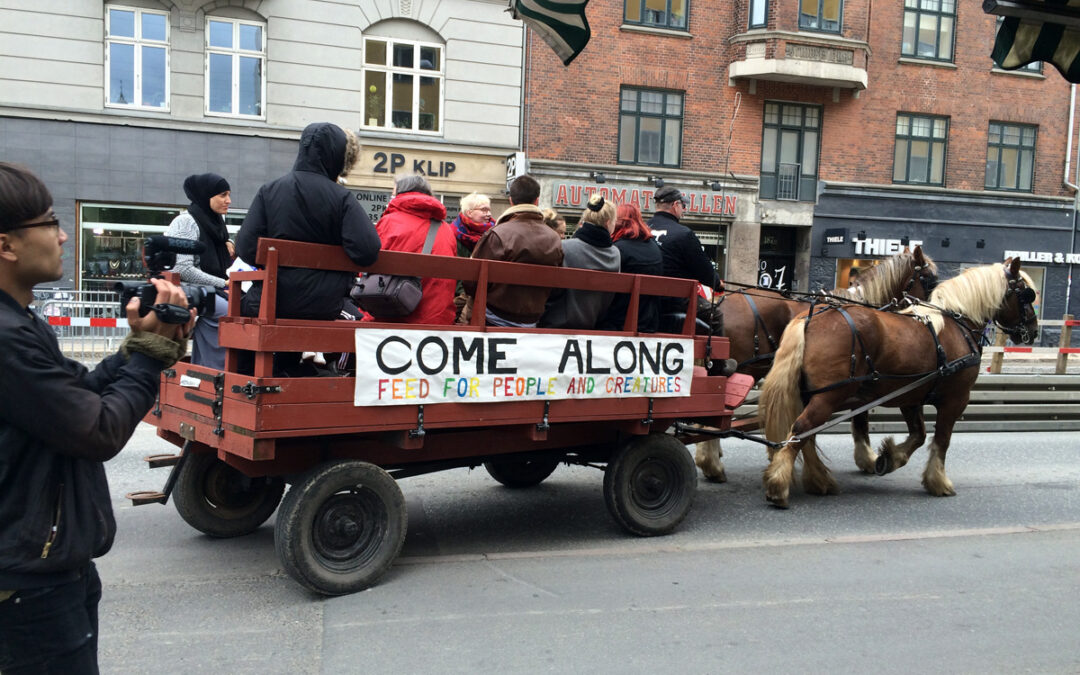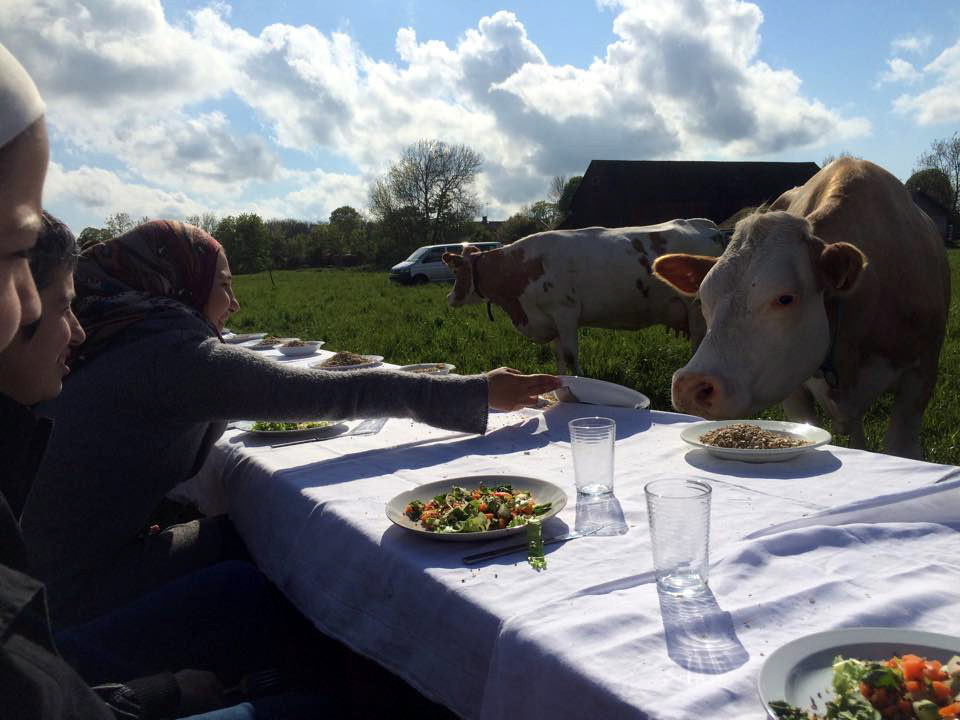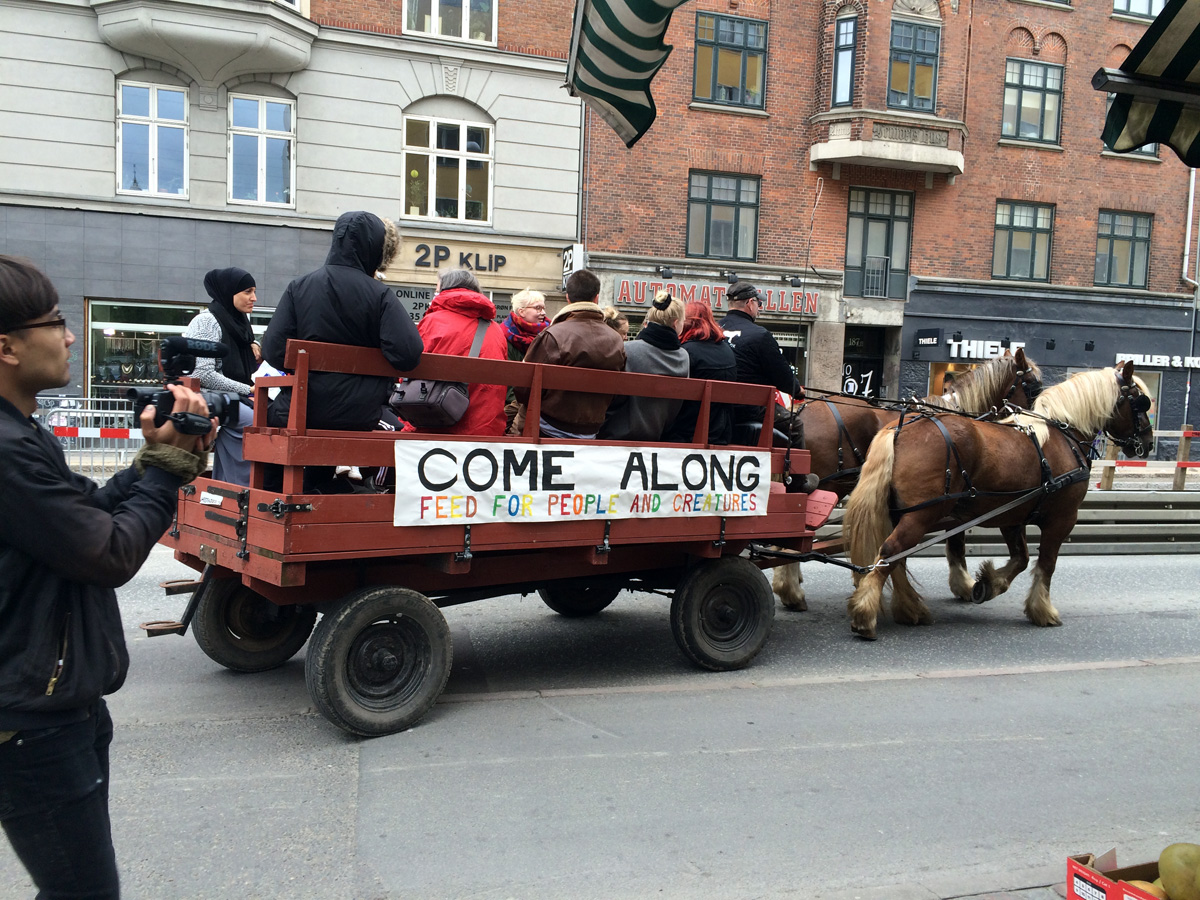
Monument of migration
Monument of migration

UR dokumentär: Kultivator
UR dokumentär: Kultivator

Konstnärs- och jordbrukskollektivet Kultivator bjuder in till en middag med kor. I tio år har Malin, Mathieu och Henric tillsammans med flera andra konstnärer och jordbrukare arbetat med konst för att skapa en bättre värld. Djurskötsel, konstmöten och undervisning bryts av med resor till storstäder. Genom konsten vill de visa att människan är en del av ett kretslopp. Deras konst är politisk och närmar sig aktivism, både inom och utanför konstvärlden.

Dinner with cows 2
Dinner with cows 2

Feeding the backyard
Feeding the backyard
Feeding the backyard, people and creatures.Kultivator and students at ANA, May 2015Kultivator and a group of students from Ölands folkhögskola enter the atelier and backyard of Astrid Noack, Norrebro, Copenhagen. During one week, they activate the place with installations and reflections of the history, the present, and the possible future of the compound. All material used is edible, and found in the local supermarkets and markets in the neighbourhood. The work is presented for the public in the form of a dinner party in the backyard on Saturday the 16;th of May. The dinner guests are picked up from around the area with horse and carriage. The horses are also invited to join the meal, as guests of honor, with special sculptural dishes made for them.















